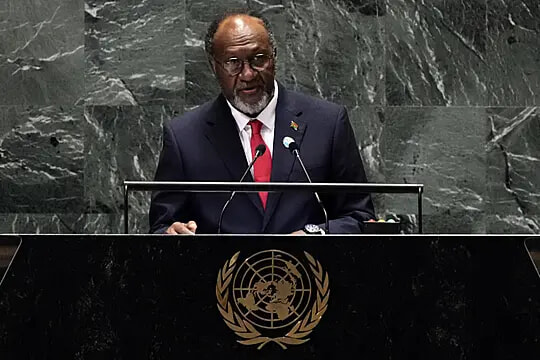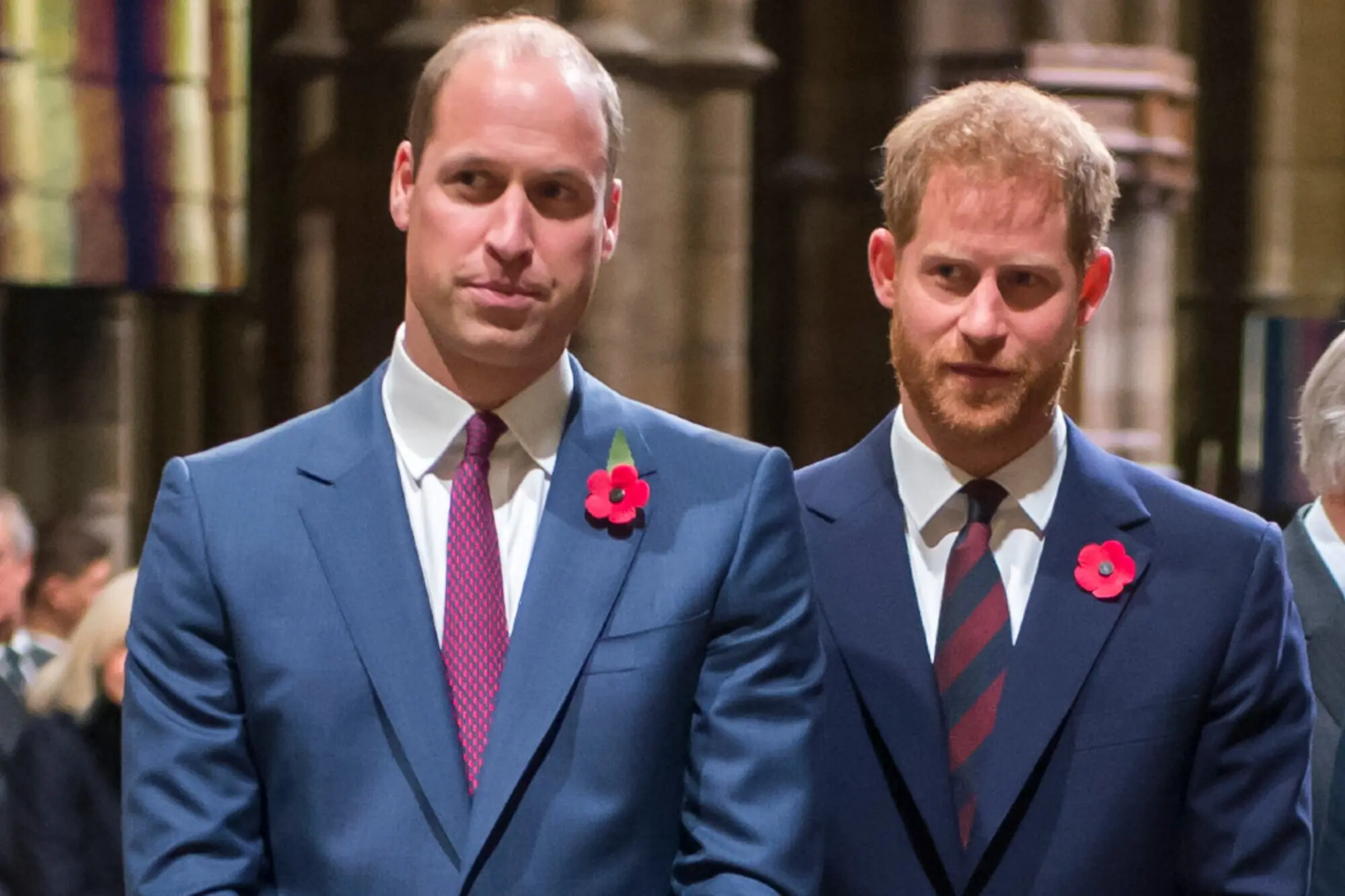
Colossal Biosciences Has Their Next De-Extinction Project: The Moa, the Tallest Bird in the World
Are you ready?
Published July 11, 2025
Advertisement
Advertisement
1. A Lost Giant

For centuries, the South Island giant moa has loomed as a symbol of New Zealand’s vanished wonders, known to Māori, scientists, and schoolchildren as a creature of mythic proportions. Towering up to twelve feet tall and weighing more than 500 pounds, these flightless birds dominated the islands’ ancient forests, evolving without natural predators for millions of years. Archaeological records and oral traditions recall their role as ecosystem engineers, pruning foliage, dispersing seeds, and shaping landscapes now transformed in their absence. Nine distinct moa species once grazed from bush to alpine, their remains unearthed from caves, riverbeds, and even Māori rock art depicting encounters with these gentle giants. The moa’s fate, however, was sealed with the arrival of humans some 600 years ago, who, through overhunting and habitat change, drove all species to extinction within mere centuries. For generations, the moa’s bones and stories lay dormant, their extinction a sobering testament to humanity’s impact on fragile ecosystems. Yet the allure of these birds persisted, inspiring collectors, filmmakers, and Indigenous scholars to preserve their memory. The giant moa’s disappearance not only altered the land but contributed to the loss of other creatures, such as the Haast’s eagle, once its only natural enemy. Despite advances in conservation, no sighting or sound of the moa has graced the forests of Aotearoa in half a millennium. The vision of restoring this monumental species once belonged only to dreamers and storytellers. Now, science and imagination converge on an audacious goal: to bring the moa back.
Advertisement
2. Seeds of Resurrection

Behind the new quest for the moa’s return stands a powerful collaboration, linking ancient wisdom, cutting-edge science, and global ambition. Colossal Biosciences, a Texas-based biotech firm with a portfolio that includes efforts to revive the woolly mammoth, dodo, thylacine, and dire wolf, has set its sights on the moa. Joined by acclaimed director and moa enthusiast Peter Jackson, whose collection of moa bones ranks among the world’s largest, the company has committed more than $15 million to the cause. At the heart of this venture is the Ngāi Tahu Research Centre, based at the University of Canterbury and representing New Zealand’s principal Māori tribe of the south. The initiative is uniquely Māori-led, with tribal experts setting the direction, pace, and cultural protocols for every stage of research. Their deep relationship with the land and its creatures ensures that the revival project honors not only scientific progress but also spiritual, cultural, and ecological dimensions. Dozens of scientists, including Paul Scofield, New Zealand’s leading moa researcher, and archaeologist Kyle Davis, have joined forces to gather well-preserved bones and ancient DNA. Cave expeditions and fossil digs are ongoing, with over sixty individual specimens sampled to reconstruct the genomes of all nine moa species. Colossal’s previous achievements, such as the functional de-extinction of dire wolves, provide a technological springboard for this avian challenge. Museums, Indigenous archives, and private collections offer a trove of bones, eggshell fragments, and even feathers, holding genetic secrets from the ancient world. The endeavor has become more than a scientific mission; it is a journey into memory, identity, and hope for ecological restoration.
Advertisement
3. Genomic Puzzles

The technical heart of de-extinction lies in decoding the moa’s genetic blueprint from its long-buried remains. Scientists use advanced DNA sequencing techniques, comparing fragments from extinct moa with living relatives like emus and tinamous to identify key genetic differences. Genomes are mapped, stitched together, and analyzed for traits unique to each moa species, a process made possible by the relative youth and preservation of their DNA. Colossal’s avian genomics group leverages computational biology, AI, and gene editing to reconstruct the moa’s genome with ever-increasing accuracy. The project benefits from lessons learned with the dire wolf and woolly mammoth, where ancient DNA was reassembled, edited, and transplanted into living cells. For birds, the challenge is greater, as embryos develop inside eggs rather than mammalian wombs, complicating the process of cloning and gestation. Colossal’s approach involves editing primordial germ cells from emu or tinamou embryos, programming them with the reconstructed moa genome. These edited cells are introduced into host embryos, with the goal of producing living birds whose eggs or sperm carry the complete moa code. The first successful moa chicks would hatch not from their own species, but from surrogate parents—living bridges between the ancient and modern worlds. Researchers remain cautious, acknowledging the many scientific hurdles and ethical questions ahead. Yet with every sampled bone, sequenced genome, and technological breakthrough, the long-lost moa draws nearer to a second dawn.
Advertisement
4. Rewilding a Legend

Reviving the moa is more than a laboratory pursuit; it demands careful thought about where and how these giants might live again. The South Island’s forests and grasslands have changed dramatically since moa last roamed, shaped by centuries of agriculture, urbanization, and invasive species. Ngāi Tahu leaders, with deep connections to the land, will oversee assessments of potential habitats and the ecological impacts of reintroduction. Tribal lands at various altitudes across New Zealand are under review for their suitability, and any eventual rewilding will prioritize local ecosystems and community benefit. Colossal’s team envisions secure reserves, blending conservation with controlled public access, echoing the model established for the company’s dire wolves. Ecological restoration projects are underway in tandem with the moa research, aiming to prepare habitats and support other endangered species. The return of the moa could help restore lost ecological functions, such as seed dispersal and forest pruning, crucial to the health of native landscapes. Scientists caution that reintroducing large, wingless birds poses significant risks, from habitat competition to potential conflicts with humans. Continuous dialogue with ecologists, policymakers, and local residents is central to the process, ensuring safety, cultural respect, and environmental stewardship. The ultimate goal is to create a future where the giant moa can thrive, benefiting both nature and people. For New Zealand and the world, the prospect of seeing a living moa is as much a question of readiness as possibility.
Advertisement
5. Engineering Resurrection

Midway through this unprecedented journey, the core of the project comes into focus: the bold attempt to reverse extinction and engineer a living moa. Colossal Biosciences, leveraging its gene-editing toolkit, intends to create moa-like birds through precise manipulation of living avian genomes. Unlike mammals, where cloned embryos can be implanted in surrogate mothers, birds require researchers to introduce edited germ cells into eggs of closely related species. Once these birds mature, they will mate and, if successful, produce offspring carrying the true genetic legacy of the moa. To date, Colossal has established colonies of tinamous and access to emu eggs, providing the biological canvas for the de-extinction process. The near-term focus is on assembling the most accurate moa genome possible, using high-quality bone samples preserved in cold, dry caves. A key milestone will be the birth of the first hybrid birds, whose reproductive cells contain the reconstructed moa DNA. Researchers remain realistic about the timeline, estimating up to a decade before a true moa stands in New Zealand once more. The partnership with Ngāi Tahu ensures that the project is rooted in Indigenous priorities and protocols, giving it legitimacy and community grounding. Every stage is documented, discussed, and debated, balancing excitement with caution and respect for the land’s living heritage. With the unveiling of this main endeavor, de-extinction shifts from fantasy to possibility, captivating a global audience.
Advertisement
6. Controversy

Not everyone greets the moa project with unreserved enthusiasm; scientific and ethical debates swirl around the feasibility and value of de-extinction. Skeptics argue that even the most sophisticated gene editing cannot truly recreate an extinct species—at best, producing a genetic hybrid or simulacrum. The resources devoted to de-extinction, critics contend, might be better spent protecting the hundreds of threatened species still clinging to survival in New Zealand and beyond. Ecologists warn of unforeseen consequences: new diseases, ecological imbalances, or the inability of recreated birds to adapt to changed environments. There is concern that the narrative of technological salvation could diminish the urgency of traditional conservation efforts and habitat protection. Supporters counter that the technologies developed for the moa can aid existing conservation by increasing genetic diversity and resilience in endangered birds. Colossal’s leadership acknowledges these challenges, positioning de-extinction as a complement, not a replacement, to conventional conservation. Indigenous partners emphasize that the project’s primary value lies in cultural revival, education, and the reinvigoration of ancestral stories and stewardship. The scientific community is divided but engaged, with open forums, peer review, and public debate guiding the project’s next steps. International interest in the project is intense, as media, museums, and governments watch for both scientific progress and social impact. The moa’s return, if it happens, will test the limits of science, ethics, and imagination in the Anthropocene.
Advertisement
7. Lessons from the Past

To chart a path for the future, the project’s leaders draw deeply from the lessons of history—both ecological and human. The extinction of the moa serves as a sobering reminder of how quickly even the most dominant species can vanish when environments shift. The bird’s demise reverberated through New Zealand’s ecosystems, disrupting plant communities, insect populations, and predator-prey relationships. The loss of the moa also affected Māori culture, erasing a source of food, materials, and mythic connection. By integrating ancient knowledge with cutting-edge genomics, the revival initiative hopes to honor the past while preparing for new ecological realities. Traditional Māori ceremonies, values, and stories are woven into the fabric of the research, informing decisions at every stage. Archaeological discoveries, including well-preserved bones and prehistoric art, inspire both scientific inquiry and community engagement. Restoring the moa is not about recreating the past unchanged, but about fostering resilience, adaptability, and respect for the interdependence of all life. Every setback, discovery, and debate adds to the collective wisdom guiding the project. If successful, the moa’s reappearance will stand as a testament to humanity’s capacity for both destruction and healing. It will also remind future generations of the delicate balance between innovation and humility in the face of nature’s mysteries.
Advertisement
8. The Race for De-Extinction

The moa project is just one frontier in a wider movement, as biotech firms and researchers around the world race to restore vanished species. Colossal’s track record includes the functional de-extinction of dire wolves—three living pups born from gene-edited gray wolves—as well as ongoing work on the dodo and woolly mammoth. These endeavors push the boundaries of genetics, cloning, and artificial reproduction, driving rapid advances in biotechnology. Each species presents unique challenges: ancient DNA degrades over time, requiring ever-more sophisticated computational and laboratory tools. Efforts to clone birds face technical hurdles far greater than those encountered with mammals, as embryos must be developed in artificial eggs or through complex germline editing. Successes with one species pave the way for others, offering new hope for endangered animals through techniques that boost genetic diversity and disease resistance. Yet as the field accelerates, it raises profound questions about ecological responsibility, animal welfare, and the meaning of authenticity. The economic and cultural stakes are high, with ecotourism, conservation funding, and scientific prestige all in play. Global media coverage ensures that every milestone, failure, or controversy reverberates far beyond the labs and field sites. The moa’s resurrection will become a bellwether for de-extinction: a test case for how science, society, and nature might coexist in a world reshaped by human ambition. At its heart, the project is a challenge to humanity’s relationship with extinction itself.
Advertisement
9. Toward The Future

As the moa project advances, optimism and uncertainty travel hand in hand. The sequencing of genomes proceeds, bones are excavated, and partnerships deepen, yet the technical obstacles remain formidable. Colossal’s team continues to develop artificial egg constructs, refine gene-editing protocols, and experiment with avian reproductive techniques. Progress is slow but steady, with frequent updates shared among Māori leaders, scientists, and the public. Plans for ecological restoration, educational exhibits, and cultural storytelling run parallel to laboratory work, ensuring a holistic approach. The timeline stretches ahead, with estimates ranging from several years to a full decade before the first moa might hatch. Indigenous voices shape every aspect, from research priorities to community consultation and ceremonial practice. The global scientific community remains watchful, eager for breakthroughs yet mindful of the limits and risks. Funding and public interest are sustained by a mixture of scientific promise, cultural pride, and the sheer audacity of the mission. For all the excitement, the return of the moa is not guaranteed, but the journey itself is reshaping the future of both science and society. In this great experiment, possibility and caution are equal partners.
Advertisement
10. Resurrection

Whatever the outcome, the quest to revive the South Island giant moa marks a turning point in humanity’s relationship with the natural world. If a living moa once again strides across New Zealand’s forests, it will be more than a marvel of technology—it will be an act of cultural healing and ecological renewal. The project redefines what is possible in conservation, blending the wisdom of the past with the promise of the future. Through its Māori-led approach, the endeavor champions a model of collaboration, respect, and shared stewardship rarely seen in large-scale science. It confronts us with hard questions: What do we owe lost species? Can we undo the consequences of our ancestors’ choices? Will technology be a tool for restoration or a distraction from protecting what remains? In chasing the moa’s shadow, the world is forced to grapple with the true cost of extinction and the fragile hope of return. Whether successful or not, the project’s legacy will be felt in policy, philosophy, and the collective imagination. It is an invitation to dream boldly, act wisely, and recognize our profound responsibility as guardians of Earth’s diversity. The moa, once lost, now stands as both a warning and a beacon—reminding us that even the impossible begins with belief, and that the stories we choose to write shape the world for generations to come. This is not just a story of resurrection, but of renewal, memory, and the future we dare to build.
Advertisement
Advertisement
You May Also Like






